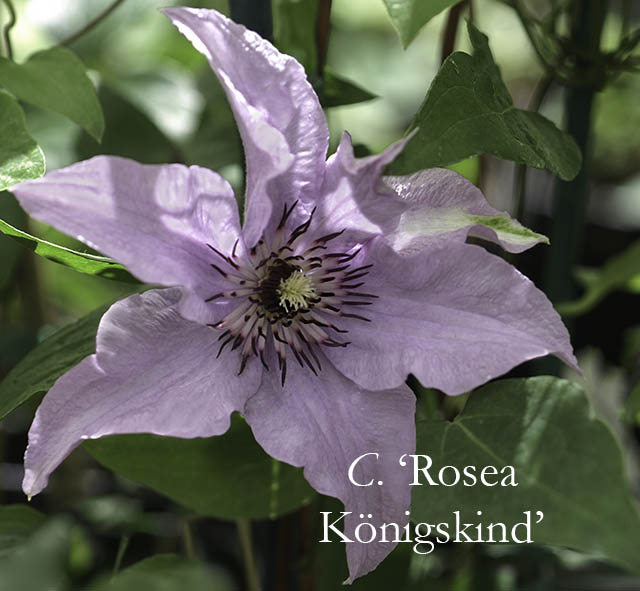I love spring because that is when the weather starts to warm up and all my clematis start sending out new growth. It also means that in a short while I will be rewarded with a show their glorious blooms. However, it is also the time to be on the lookout for aphids. Unfortunately, these nasty little parasites also enjoy the spring’s bump in temperatures and in the blink of an eye (okay, maybe a little longer) you could possibly have a full infestation on some of your prized plants.
I consider aphids to be fine diners as they like to feast on the very best parts of my plant, usually the tender new leaves and the stems of flower buds. If I was to leave these soft-bodied foliage foodies unchecked they would multiply very quickly into a large population of sapsuckers. There is strength in numbers, so this is when they can do the most damage such as being responsible for distorted leaves, stunted new shoots, causing yellowing, etc. Another nasty side effect is, as they are feeding on the plant’s sap (phloem), they excrete a sticky honeydew substance onto the leaves which will eventually become a breeding ground for unsightly black, sooty mold to grow.
The bad news is that if you see ladybugs (aka lady beetles) on your plants in the spring it is a very good chance that you have aphids as well. The good news is that these beneficial insects are not there just because they like the looks of your clematis, roses, etc., they are there to partake in lunch, i.e. aphids!
Management
I know this may sound yucky (and not very becoming of a Queen), but if there are only signs of a few aphids I royally eradicate them by just taking my thumb and index finger and quickly remove them from the stem. However, if I have been remiss and allowed them to overpopulate a plant, I take my old friend out of my garden arsenal, the “Bug Blaster” (see http://clematisqueen.com/content/water-blasting-your-garden-nemeses), to wash away my worries.
So, go out today and see if any of your babies are being attacked. I know they will thank you later when their beautiful blooms appear.
For more detailed information on the life cycle and management of aphids, please visit: UC Davis How to Manage Pest Aphids (http://www.ipm.ucdavis.edu/PMG/PESTNOTES/pn7404.html).
